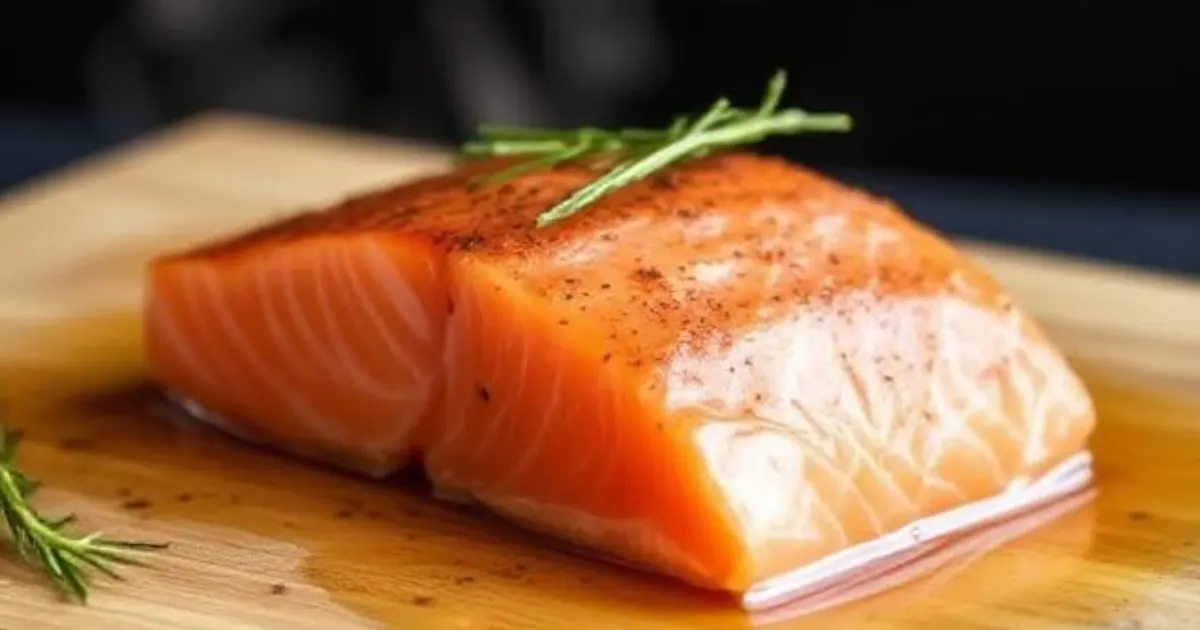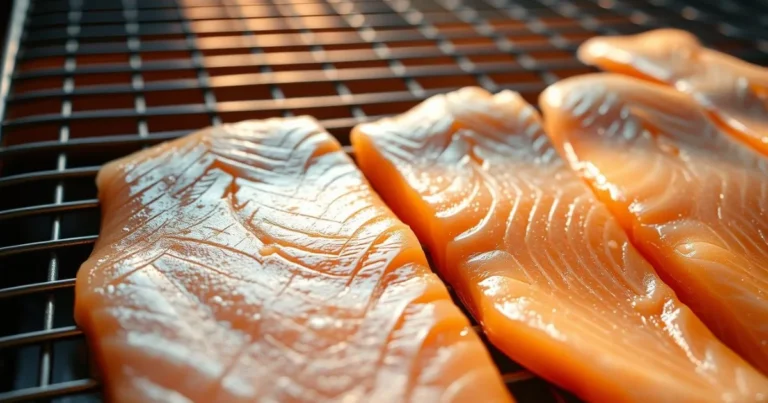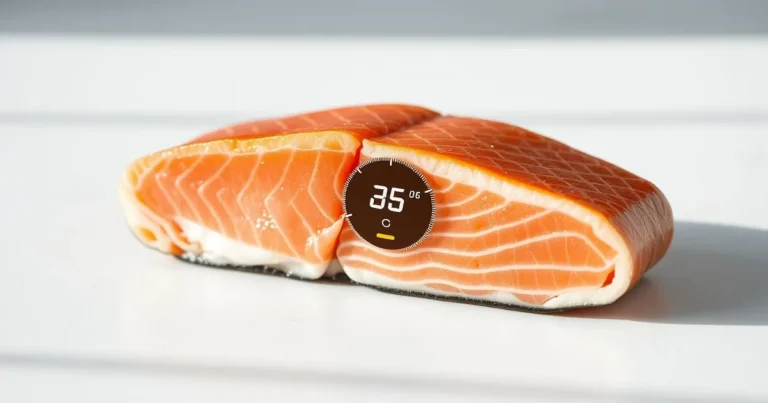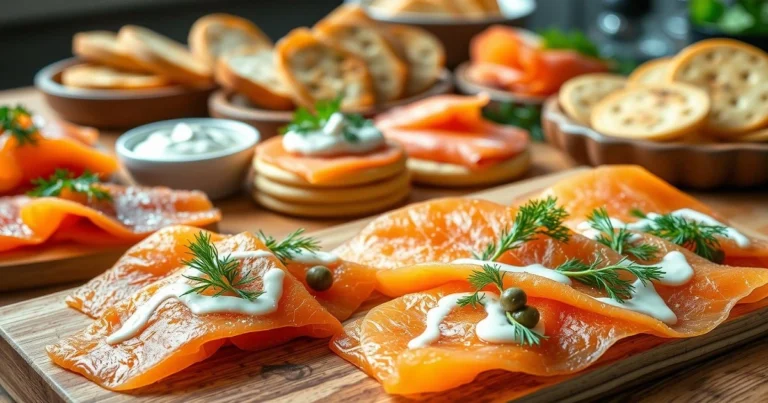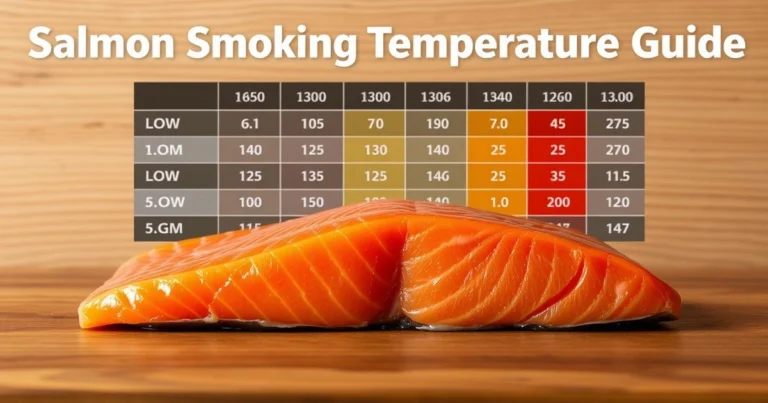Best Smoked Salmon Brine Recipe for Perfect Flavor
Smoked Salmon Brine Preparation
Making the perfect smoked salmon brine turns regular fish into a dish fit for a restaurant. It’s all about the brine. A good brine adds flavor and keeps the fish moist and tasty.
Learning to smoke salmon starts with mastering the brine. Whether you’re cooking at home or dreaming of being a chef, the right brine makes all the difference. It’s about finding the right mix of salt, sugar, and spices to bring out the fish’s natural flavors.
Table of Contents
Understanding the Art of Smoking Salmon
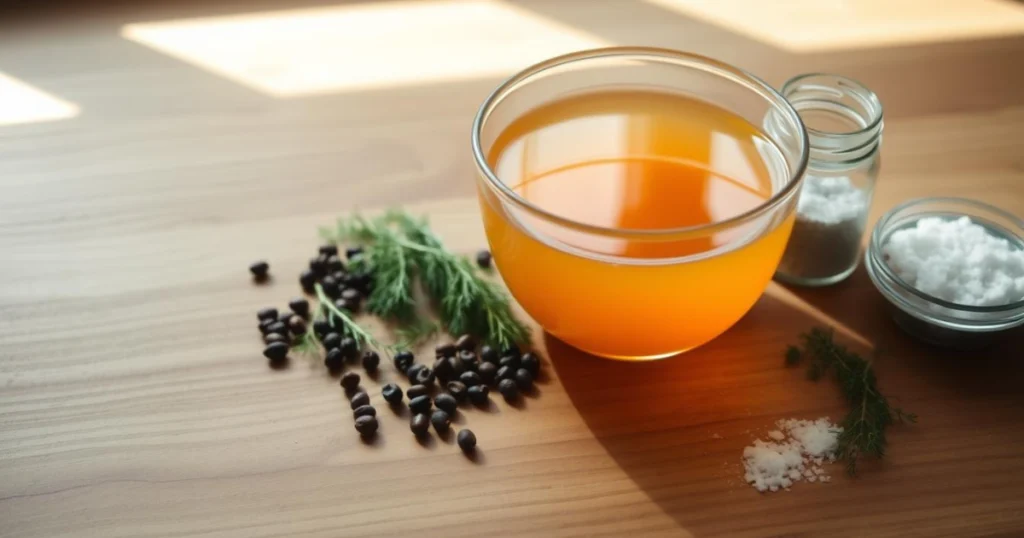
Smoking salmon turns a simple fish into a gourmet treat with deep flavors. Learning to smoke salmon opens up a world of taste and skill. It makes this seafood even more special.
To make perfect smoked salmon, you need to know some key principles. Success depends on several important factors. These factors affect the quality and taste of your smoked salmon.
Why Brining is Essential
Brining is a vital step in smoking salmon. It does several things:
- It makes flavors go deeper into the fish.
- It keeps the salmon moist while it’s smoking.
- It creates a protective layer for better texture.
Benefits of Hot Smoking vs Cold Smoking
Smoking salmon in different ways can give you different results. Let’s look at the two main methods:
| Smoking Method | Temperature | Cooking Result |
| Hot Smoking | 165-180°F | Fully cooked, flaky texture |
| Cold Smoking | 80-90°F | Preserved, silky texture |
Choosing the Right Salmon Species
Not all salmon is good for smoking. Atlantic and King Salmon are the best. They have a lot of fat, which keeps them moist and absorbs smoke flavors well.
Knowing the right temperature for smoked salmon is key. It helps you make a delicious, top-quality dish that will wow seafood lovers.
Essential Equipment and Tools for Smoking Salmon
To make perfect smoked salmon brine, you need more than just ingredients. You must have the right tools and equipment. These ensure precise temperature control and the best flavor.
Starting your smoked salmon brine journey requires several key pieces of equipment. These tools are crucial for delicious results:
- Digital Meat Thermometer: The ThermoWorks Smoke Remote BBQ Alarm Thermometer is vital. It lets you monitor both smoker and salmon temperatures with great precision.
- Weber Smokey Mountain smoker for consistent heat distribution
- Wire cooling rack for proper salmon drainage
- Temperature probe for internal fish temperature tracking
- Baking sheets for preparation and storage
Your smoked salmon brine process needs careful temperature management. A reliable digital thermometer is key. It helps you keep exact cooking conditions. This prevents overcooking or undercooking your fish.
Other helpful tools include:
- Plastic wrap for covering during brining
- Aluminum foil for wrapping
- Kitchen timer for precise timing
- Paper towels for patting salmon dry
Investing in quality equipment makes your smoked salmon brine a true culinary art. Each tool is important for creating perfectly smoked, flavorful salmon.
Selecting the Perfect Salmon Cut
Choosing the right salmon cut is key for great flavor and texture when smoking. The right salmon can make your smoking process a success.
The quality of your salmon is what makes your smoking adventure successful. Not all salmon is the same. Knowing the differences can improve your cooking skills.
Atlantic vs Pacific Salmon
Different salmon species have unique qualities for smoking. King salmon is the top choice for several reasons:
- Rich, buttery flavor profile
- High oil content ideal for smoking
- Exceptional nutrient density
Fresh vs Frozen Options
Fresh salmon is usually the best choice, but high-quality frozen salmon works well too. The trick is to thaw and handle it right.
| Salmon Type | Smoking Suitability | Flavor Profile |
| King Salmon | Excellent | Rich, buttery |
| Sockeye Salmon | Good | Robust, lean |
| Atlantic Salmon | Very Good | Mild, fatty |
Quality Indicators to Look For
When picking salmon for smoking, look for these important signs:
- Bright, shiny skin
- Vibrant orange-pink flesh
- Mild ocean scent
- Firm, resilient texture
The best salmon for smoking is fresh, high-quality, and well-handled. Your choice greatly affects the taste and texture of your smoked salmon.
The Ultimate Smoked Salmon Brine Recipe
Making the perfect smoked salmon brine is an art. It turns regular fish into a tasty treat. Your brine will make your dishes stand out and wow your guests.
Now, let’s look at the key ingredients for a top-notch smoked salmon brine:
- 2 salmon fillets (skin on, pin bones removed)
- 1/2 cup granulated sugar
- 1/2 cup brown sugar
- 1/3 cup kosher salt
- 2 tablespoons crushed black peppercorns
- 1 tablespoon coriander
- 1 tablespoon paprika
The brine-making process is key for rich flavors. Begin by mixing your dry ingredients well. Precision is key in creating the perfect brine.
When curing, follow a careful layering:
- Sprinkle a third of the cure onto plastic wrap
- Place fillet skin-side down on the cure
- Sprinkle another third of cure on the flesh
- Stack the second fillet skin-side down
- Coat with remaining cure
Wrap the fillets tightly in plastic wrap and foil. Put a weighted baking sheet on top for even curing. Refrigerate for 8-10 hours to let the brine work its magic.
Pro tip: The salt and sugar mixture will transform into a liquid within 30 minutes, creating a perfect flavor-infusing environment.
After curing, rinse the salmon under cold water to remove excess salt. Pat dry and let it rest until it feels slightly tacky. This tackiness is your pellicle, which helps the smoke stick to the fish.
Proper Brining Techniques and Timing
Learning how to brine smoked salmon is key to making delicious fish. The brining process turns a regular salmon fillet into a tasty masterpiece. It adds rich flavors and keeps the fish moist and tender.
The secret to a great smoked salmon brine is knowing the right techniques. Your brining method will greatly affect the salmon’s taste and texture.
Temperature Control During Brining
Keeping the right temperature is vital when brining smoked salmon. Here are some important tips:
- Always brine in the refrigerator to prevent bacterial growth
- Keep the brine solution between 35-40°F
- Use a food-grade thermometer to monitor temperature
Container Selection Tips
Picking the right container is crucial for brining smoked salmon. Here are some suggestions:
| Container Type | Pros | Cons |
| Glass | Non-reactive, easy to clean | Fragile, heavy |
| Food-grade Plastic | Lightweight, affordable | May absorb odors |
| Stainless Steel | Durable, non-reactive | Can be expensive |
For brining salmon, choose a non-reactive container that lets the fish soak fully. A basic brine mix is 3:1 brown sugar to kosher salt. Brine the salmon for 6-8 hours in the fridge. This ensures it soaks up the right flavors.
After brining, rinse the salmon under cool water and pat it dry. Let it air-dry in the fridge for at least 4 hours. This step helps the smoke stick during smoking.
Wood Selection for Optimal Smoke Flavor
Choosing the right wood is key to making your smoked salmon stand out. The wood you pick greatly affects the flavor of your dish.
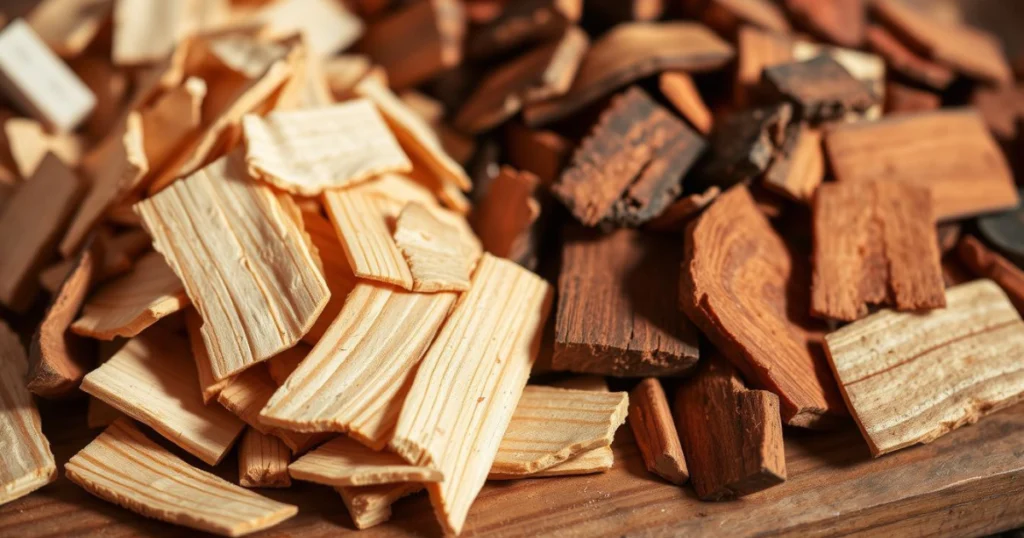
Wood Chips for Smoking Salmon
Each wood type brings its own smoky taste. Knowing these differences helps you get the perfect balance in your smoked fish.
- Alder Wood: The top choice for salmon, offering a light, buttery smoke with a hint of sweetness
- Apple Wood: Adds a sweet touch without overpowering the fish’s taste
- Maple Wood: Brings an earthy sweetness that pairs well with salmon
- Pecan Wood: Introduces a nutty flavor with a medium smoke intensity
Here are some tips for choosing wood when smoking salmon:
- Always use dry wood chips for consistent smoke
- Stay away from green or wet wood to avoid bad flavors
- Begin with a small amount of wood chips
- Try mixing different wood types
| Wood Type | Flavor Profile | Intensity |
| Alder | Light, buttery, sweet | Low |
| Apple | Subtle, fruity | Low-Medium |
| Maple | Earthy, sweet | Medium |
| Pecan | Nutty, complex | Medium |
Pro tip: Smokers in the Pacific Northwest often choose alder wood. Meanwhile, those in California prefer oak. The goal is to find a wood that brings out the best in your salmon, not hides it.
Temperature Control During Smoking Process
Getting the internal temperature of smoked salmon right is key to a great taste and texture. It’s what makes a home cook a pro. You need to know how to manage the heat during the smoking process.
When you smoke salmon, keeping the temperature steady is important. It turns raw fish into a tasty treat. There’s a specific temperature that makes sure it’s safe and delicious.
Understanding Smoking Zones
There are different temperature ranges for smoking:
- Low-Temperature Zone: 120-150°F – Gentle smoke infusion
- Medium-Temperature Zone: 150-180°F – Primary smoking range
- High-Temperature Zone: 180-200°F – Final cooking stage
Monitoring Internal Fish Temperature
The salmon’s internal temperature tells you if it’s done. Here’s a guide:
| Smoking Stage | Temperature Range | Outcome |
| Smoker Temperature | 180-200°F | Optimal Smoking Conditions |
| Salmon Internal Temperature | 130-145°F | Perfect Tender Texture |
Use a good meat thermometer to check the salmon’s temperature. Take it out of the heat when it hits 140°F for a silky finish.
Creating the Perfect Pellicle
Learning to smoke salmon means mastering the art of creating a perfect pellicle. A pellicle is a thin, tacky layer that forms on the salmon’s surface. It’s key to the smoking process.
- Remove salmon from the brine solution
- Pat the fish dry with paper towels
- Place salmon on a wire rack in the refrigerator
- Allow fish to air dry uncovered
The pellicle forms in 1-4 hours, with a minimum of 30-60 minutes. Keep the area cool with good airflow. A wire rack ensures even drying and prevents moisture.
“The pellicle is your flavor foundation – treat it with care and precision.” – Professional Smoking Experts
For a perfect pellicle, keep the fridge temperature steady. Avoid over-drying. You want a slightly sticky surface to trap smoke and boost flavor.
Seasoning Options and Flavor Enhancements
To make your smoked salmon brine better, choose herbs, spices, and aromatics carefully. The right mix can turn your salmon into something amazing. It will leave a lasting taste that you’ll love.
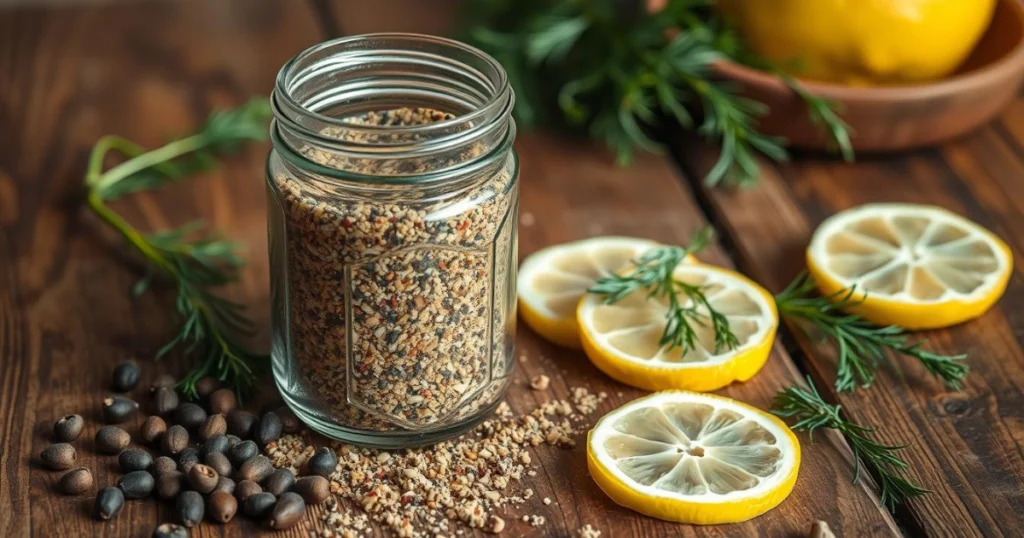
Smoked Salmon Brine Seasoning
Your smoked salmon brine is a chance to explore flavors. It’s all about finding the right balance. You want to enhance the fish’s taste without overpowering it.
Herb and Spice Combinations
When making your smoked salmon brine, think about these flavors:
- Kosher salt with coarse black pepper for basic taste
- Dried herbs like thyme, sage, and oregano for a rich flavor
- Granulated garlic for a strong taste
- Cayenne pepper or paprika for a hint of heat
Citrus and Aromatics
Citrus zest and aromatics can really change your smoked salmon brine. Try adding ingredients that bring out brightness and depth:
- Lemon pepper seasoning
- Fresh lemon or orange zest
- Raw garlic pieces
- Whole peppercorns
Pro tip: Keep your dry smoked salmon brine mix in an airtight container for up to six months. This way, you’ll always have a flavorful mix ready.
Step-by-Step Smoking Process
Learning to smoke salmon needs patience and precision. It turns a simple fish into a flavorful dish. Knowing the right temperature and technique is key for top-notch results.
- Prepare your smoker by preheating to 250 degrees Fahrenheit
- Place salmon vertically on smoker racks, skin-side down
- Use aromatic wood chips like apple or alder for enhanced flavor
- Monitor internal temperature closely
Temperature control is vital when smoking salmon. Keep the smoker at 250 degrees. Aim for an internal temperature of 140-145 degrees in the thickest part of the salmon.
| Smoking Parameter | Recommended Setting |
| Smoker Temperature | 250°F |
| Smoking Duration | 1.5 to 2 hours |
| Internal Temperature Goal | 140-145°F |
| Recommended Wood Chips | Apple, Alder, Cherry |
Different salmon fillets need different smoking times. Smaller cuts might take 12-15 minutes, while larger pieces could need 20-30 minutes. Use a wireless meat thermometer to track the internal temperature accurately and prevent overcooking.
After smoking, let the salmon rest for a few minutes. It should look opaque and flake easily when fully cooked. For the best taste, refrigerate your smoked salmon and eat it within 10 days.
Storage and Serving Suggestions
Keeping your homemade smoked salmon fresh is key. Store it in an airtight container in the fridge. It will stay tasty for 3-10 days, depending on how you made it.
Refrigeration and Storage Tips
- Store unopened smoked salmon for 7-10 days in the refrigerator
- Once opened, consume within 5 days
- Use airtight containers to maintain freshness
- Prevent cross-contamination by storing separately from other foods
Freezing Techniques
Freezing is a great way to keep your smoked salmon longer. Wrap it well in freezer-safe packaging to avoid freezer burn.
- Freeze for up to 6 months
- Thaw slowly in the refrigerator (24 hours recommended)
- Never refreeze previously frozen smoked salmon
Creative Serving Ideas
Smoked salmon can make many meals special. Here are some ideas:
- Breakfast: Bagels with cream cheese and smoked salmon
- Salads: Flake into green salads or potato salad
- Appetizers: Create salmon canapés or pinwheels
- Main courses: Pasta dishes or salmon patties
Pairing Recommendations
| Dish | Recommended Pairings |
| Hot Smoked Salmon | Roasted potatoes, steamed broccoli |
| Cold Smoked Salmon | Dill sauce, capers, lemon wedges |
Pro tip: Let smoked salmon rest for 20-30 minutes after preparation to enhance flavor and texture.
Conclusion
Making perfect smoked salmon is an art that starts with brining. Your brine is key to turning regular fish into a dish to remember. By picking the right ingredients and following the right steps, you can make salmon as good as a restaurant’s at home.
Learning to smoke salmon is more than just knowing how to do it. It’s about loving the process and being precise. We’ve talked about wet and dry brining, which give you options. Whether you use a wet brine or a dry one, the goal is to add flavor and keep the fish moist.
Remember, getting better at smoking salmon takes time. Try different brining times, wood chips, and seasonings. Start with the basics we’ve covered, and with practice, you’ll get better. Soon, you’ll be making smoked salmon that will wow everyone.
Your homemade smoked salmon shows off your cooking talent and creativity. Enjoy the journey, trust your taste, and relish the tasty outcome of your smoking adventure.
FAQ
What is the best type of salmon for smoking?
Pacific salmon like King (Chinook), Sockeye, and Coho are top choices for smoking. They have a lot of fat and firm flesh, which takes smoke flavors well. Wild-caught salmon is better than farm-raised because it tastes better and has a better texture.
How long should I brine salmon before smoking?
Brining time varies from 4 to 12 hours, based on the salmon’s thickness. Thinner pieces need 4-6 hours, while thicker ones might need 8-12 hours. Always keep it in the fridge and avoid over-brining to prevent it from getting too salty.
What internal temperature indicates fully smoked salmon?
The perfect internal temperature for smoked salmon is 145°F (63°C). At this point, the salmon is fully cooked and tastes great. Use a meat thermometer to check the thickest part of the fillet.
What wood chips work best for smoking salmon?
Mild woods like alder, apple, and cherry are great for salmon. Alder is traditional in the Pacific Northwest and gives a sweet smoke flavor. Apple and cherry woods add a sweeter, more subtle smoke that goes well with the fish’s taste.
How long does smoked salmon last in the refrigerator?
Homemade smoked salmon lasts 3-5 days in the fridge if stored properly. Commercial vacuum-sealed salmon can last up to 2 weeks unopened. Keep it at or below 40°F (4°C) to keep it fresh and prevent bacteria.
Can I smoke frozen salmon?
Yes, you can smoke frozen salmon, but thaw it first. Thaw it in the fridge overnight and pat it dry before brining. This ensures even brine penetration and better smoking results.
What’s the difference between hot and cold smoking salmon?
Hot smoking cooks the salmon at 120-180°F, making it fully cooked and flaky. Cold smoking keeps the raw texture but requires curing. Hot smoking is safer and gives a traditional smoked salmon taste.
Do I need a special smoker to make smoked salmon?
You don’t need a special smoker to make smoked salmon. You can use a charcoal grill, gas grill with a smoker box, or even a DIY setup. The key is to keep the temperature low and smoke circulation good. Electric smokers are best for beginners because they control temperature well.

